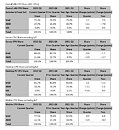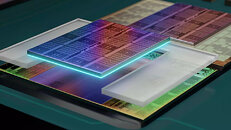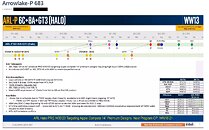
AMD Pushes Highest x86 Market Share in History in 1Q2022
AMD has been on a roll ever since it launched its first generation Zen core, which brought a much-needed performance and efficiency boost that finally brought a level of competitiveness against Intel's offerings. Years of iterations and design improvements have only increased AMD's value proposition towards consumers and businesses. A testament to that fact is that AMD in Q1 2022 hit its largest market share in history.
According to market analysis firm Mercury Research, AMD's offerings have continued to claw back market share from Intel, despite its strong recovery in performance and efficiency metrics following the debut of the 12th Gen Intel CPU family, Alder Lake. The firm places AMD's overall x86 market share for 1Q 2022 (including IoT and SoCs such as the ones found in the latest gaming consoles) at a record-breaking 27.7%, up 2.1% QoQ and a staggering 7% YoY. The server side of the equation has seen less stellar gains, but still increased by 0.9% QoQ, and 2.7% YoY, achieving a high of 11.6% share against Intel's decades-long market stranglehold.
According to market analysis firm Mercury Research, AMD's offerings have continued to claw back market share from Intel, despite its strong recovery in performance and efficiency metrics following the debut of the 12th Gen Intel CPU family, Alder Lake. The firm places AMD's overall x86 market share for 1Q 2022 (including IoT and SoCs such as the ones found in the latest gaming consoles) at a record-breaking 27.7%, up 2.1% QoQ and a staggering 7% YoY. The server side of the equation has seen less stellar gains, but still increased by 0.9% QoQ, and 2.7% YoY, achieving a high of 11.6% share against Intel's decades-long market stranglehold.


































































